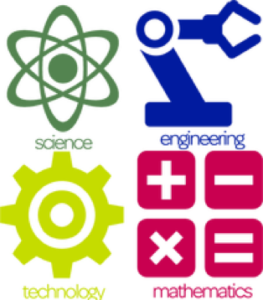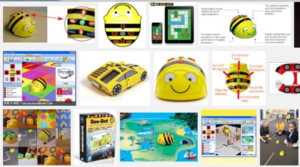Science, Technology, Engineering and Mathematics (STEM) in the learning environment.
 My story begins 15 years ago in Logan, a low socio-economic suburb in Brisbane where I was teaching in a small Catholic school which struggled for funding and at the time struggled for student achievement in these areas.
My story begins 15 years ago in Logan, a low socio-economic suburb in Brisbane where I was teaching in a small Catholic school which struggled for funding and at the time struggled for student achievement in these areas.
What I found was a profound lack of understanding of the concept of space; the idea that if the students were challenged to find a point that was anywhere other than on an object they knew, they could not solve the riddle of how to get to that point. It was simply too hard to construct a set of rules that would allow them to make that journey in their heads or on the drawing screens they were now using in the graphics environment.
So they started with drawing objects they knew and designing them in detail so that they looked real; this was the beginning of a journey of understanding for both me and the students. Upon reading a blog on Autodesk’s educational website, I came across a new technology of 3D printing and a company called Makerbot that was creating a machine that printed what students were drawing. By this stage, the students had moved into making opposing parts that needed to work together, like a screw-topped bottle and the lid of the bottle. They were creating with such accuracy that the drawings did actually look real. When I told them that 3D printing technology existed, they wanted to try it. I headed to a company on the Gold Coast (QUT) to print some of my students’ work. It was early days in the technology, so while it worked to a degree, it was nothing like the accuracy that is achieved today. When the students tried to  put it together, their immediate reaction was that their work was not good enough. These students had a belief in the technology and were suddenly reflecting on their work in a different way; they had grown a resilience to reflect and improve their work. It was as if they believed that if the machine did not work there was a human reason for it not working. The connection between drawing, 3D creation and coding had been made and I was not even aware of what coding was at this point. Suddenly, a linear design reflectivity came about everything they did; the net increase in their ability to problem solve not only their own work, but any situation I gave to them, was massively increased.
put it together, their immediate reaction was that their work was not good enough. These students had a belief in the technology and were suddenly reflecting on their work in a different way; they had grown a resilience to reflect and improve their work. It was as if they believed that if the machine did not work there was a human reason for it not working. The connection between drawing, 3D creation and coding had been made and I was not even aware of what coding was at this point. Suddenly, a linear design reflectivity came about everything they did; the net increase in their ability to problem solve not only their own work, but any situation I gave to them, was massively increased.
In the last 24 months on Twitter discussions like #aussieEd, listening to teachers explain coding to me, it has become apparent that some of these coding skills create the ability to make what I now call ‘Plane Based Binary Models’ in their heads. With this in mind, I set about to prove this theory in my classrooms.
It is like what my dad does in the factory with a forklift. He starts at the bottom and stacks up the deliveries.
Evidence was immediately obvious in the more academic students; however, what I found was surprising. Even in the less academic students, their abilities to problem solve in this way was seriously increased by playing with the understanding of what a 3D printer does. They looked at it from a ‘stacking viewpoint’ – as one of my students said, “It is like what my dad does in the factory with a forklift. He starts at the bottom and stacks up the deliveries.” This was a lightbulb moment for me and I remember thinking that here lies the future; no longer done by a man in a forklift but done by a man remotely driving a forklift. The clarity of this for me is now so simple.
 When running the first Queensland EdCamp last year, some wonderful primary teachers turned up with these things called Beebots. They presented what they did and again I found myself in a position of enlightenment when I realised this was the 2D equivalent of the linear coding thought process. But more on this in the next issue of Education Technology Solutions.
When running the first Queensland EdCamp last year, some wonderful primary teachers turned up with these things called Beebots. They presented what they did and again I found myself in a position of enlightenment when I realised this was the 2D equivalent of the linear coding thought process. But more on this in the next issue of Education Technology Solutions.


Latest posts by Mark Yeates (see all)
- Get Connected – A Story of STEM - June 29, 2016
You must be logged in to post a comment.


There are no comments
Add yours